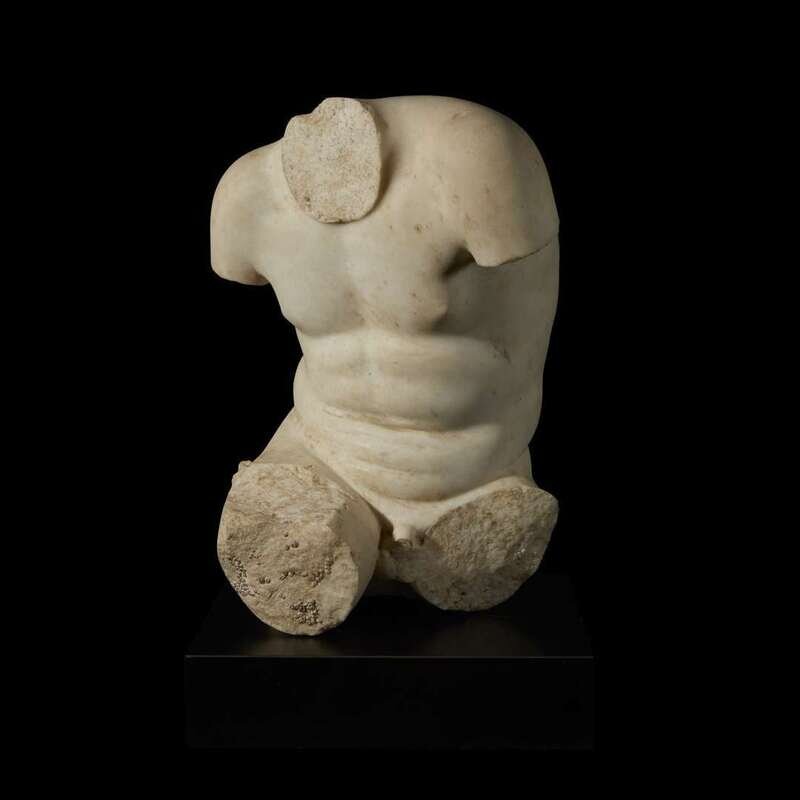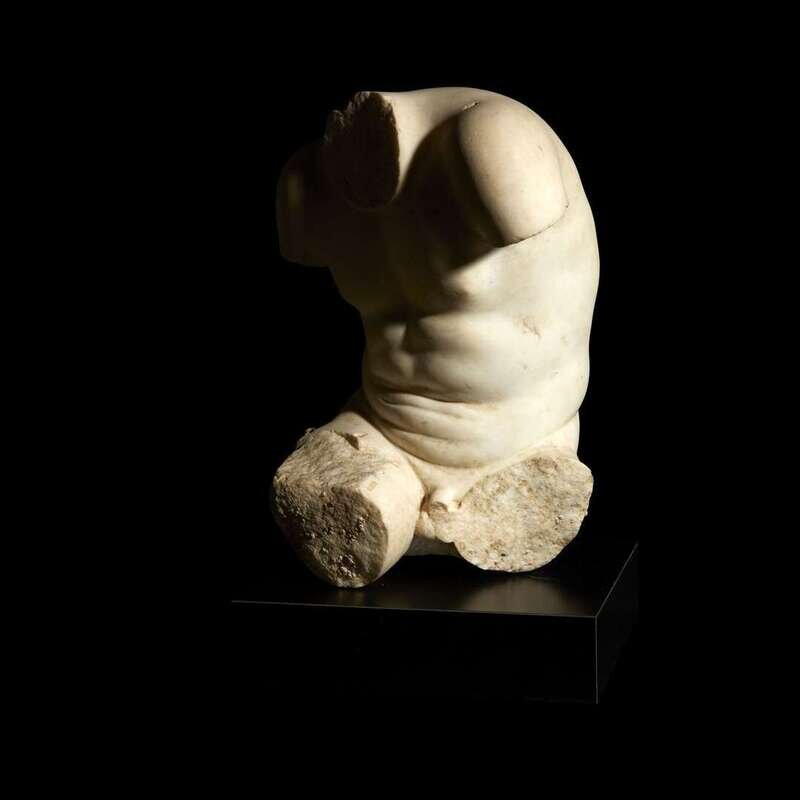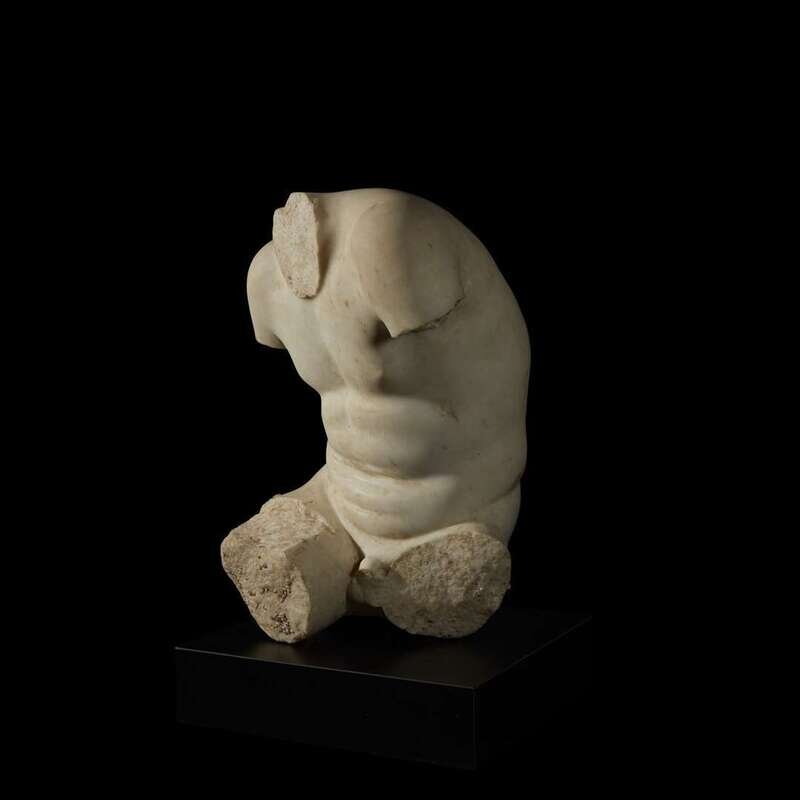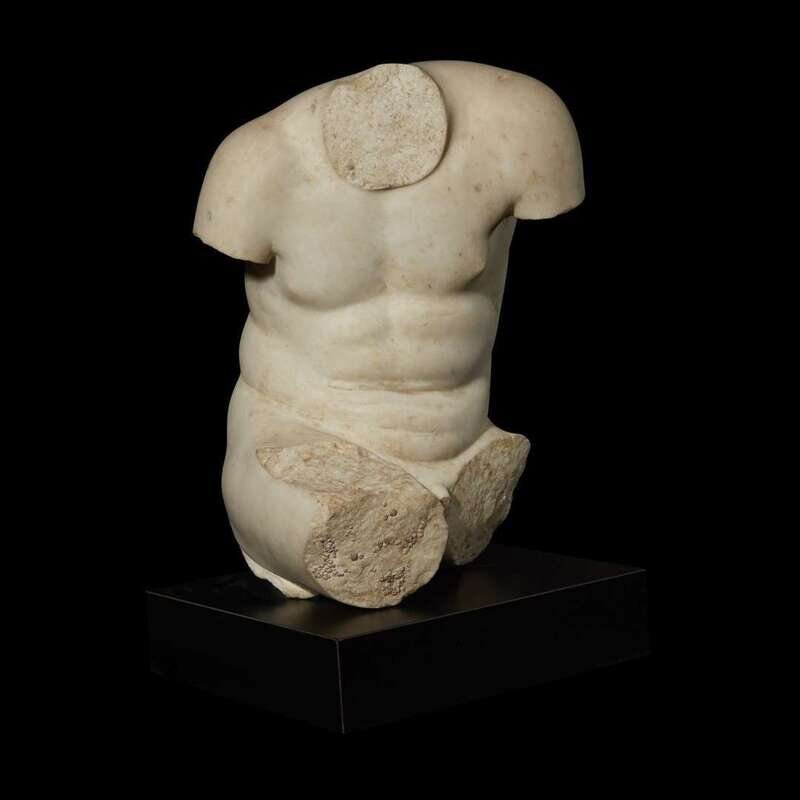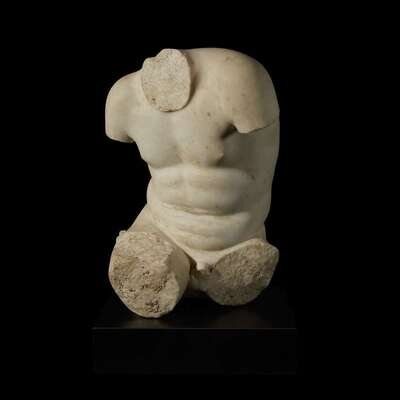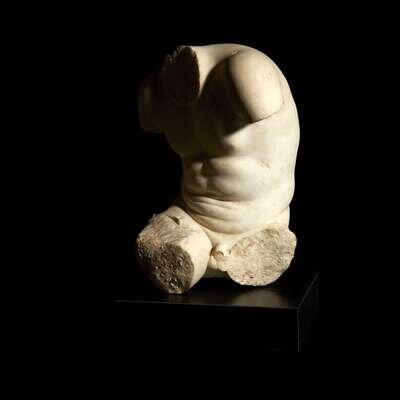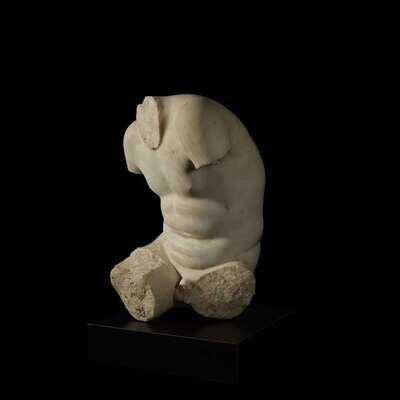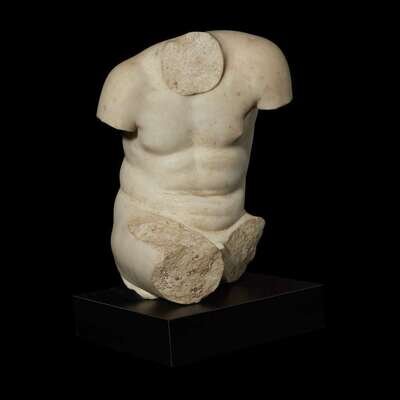Condition Report
Contact Information
Lot 23
ROMAN TORSO OF THE "SPINARIO" 1st Century BC-1st Century AD
Sale 5146 - The Jeff Hunter Collection | Antiquities and Tribal Art
Mar 13, 2019
10:00AM ET
Live / Philadelphia
Own a similar item?
Estimate
$30,000 -
50,000
Price Realized
$93,750
Sold prices are inclusive of Buyer’s Premium
Lot Description
ROMAN TORSO OF THE "SPINARIO" 1st Century BC-1st Century AD
Carved marble, the seated youth hunched slightly forward and turned to his right. His left leg (now lacking) would have been crossed over his right thigh to enable him to remove a thorn from his foot. Raised on a bespoke mount.
H: 19 in.Provenance
Christie's, New York, 7th December 2000, lot 571.with Royal-Athena Galleries, New York, 2000, inventory number CNF73, (copy of the original purchase invoice to be included).
The Jeff Hunter Collection, New York.
Note
The "Boy With Thorn" or "Spinario", that of a seated boy extracting a thorn from the bottom of his foot, is a celebrated form created in Greece in the 3rd century BC. From there it came to Rome, where it was widely copied and adapted. Unlike much of Roman and Hellenistic statuary, the story behind the original image is unclear; in the past it was argued that it depicted a faithful messenger, a shepherd boy, who had delivered his message to the Roman Senate first, only then stopping to remove a painful thorn from his foot. Others now argue it depicts the more prosaic theme of a boy removing the thorn after treading grapes. Whatever its original story, the image has for centuries been feted as a beautiful representation of the human body in complex action.A famous Roman example executed in bronze remained on display into the Middle Ages and Renaissance where it stood outside the Lateran Palace, drawing comment as early as the 1160's. It ultimately became one of the first Roman sculptures to be copied in the early Renaissance, with notable bronze reductions by Severo da Ravenna and Antico.
The present example dates late the late 1st century BC to early 1st century AD and is of a type known from a number of Roman and Hellenistic examples. For comparison see an example in the Baltimore Museum of Art, no. 152 in Vermeule.
Christie's, New York, 7th December 2000, lot 571.
with Royal-Athena Galleries, New York, 2000, inventory number CNF73, (copy of the original purchase invoice to be included).
The Jeff Hunter Collection, New York.
with Royal-Athena Galleries, New York, 2000, inventory number CNF73, (copy of the original purchase invoice to be included).
The Jeff Hunter Collection, New York.
